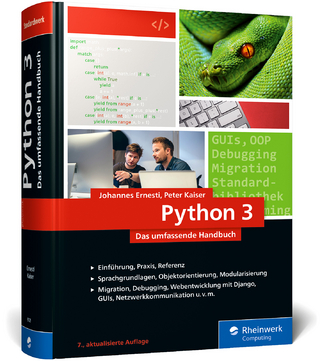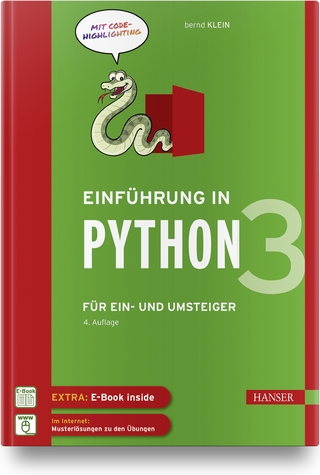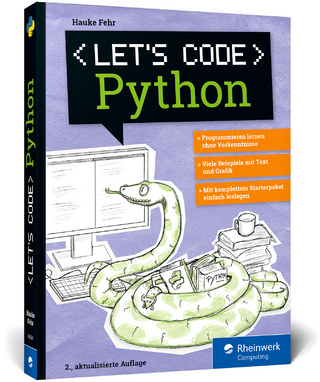
Deep Learning for Natural Language Processing
Apress (Verlag)
978-1-4842-3684-0 (ISBN)
- Discover and develop your own deep learning networks by solving the puzzle of dropout, pooling, and normalization layers
- Get an exciting introduction to reinforcement learning and how to make use of context specific behavior
- Create your own chatbot using stacked bidirectional LSTM using Tensorflow and Keras
Discover the concepts of deep learning used for natural language processing (NLP), with full-fledged examples of neural network models such as recurrent neural networks, long short-term memory networks, and sequence-2-sequence models.
You'll start by covering the mathematical prerequisites and the fundamentals of deep learning and NLP with practical examples. The first three chapters of the book cover the basics of NLP, starting with word-vector representation before moving onto advanced algorithms.
The final chapters focus entirely on implementation, and deal with sophisticated architectures such as RNN, LSTM, and Seq2seq, using Python tools: TensorFlow, and Keras. Deep Learning for Natural Language Processing follows a progressive approach and combines all the knowledge you have gained to build a question-answer chatbot system.
This book is a good starting point for people who want to get started in deep learning for NLP. All the code presented in the book will be available in the form of IPython notebooks and scripts, which allow you to try out the examples and extend them in interesting ways.
- Gain the fundamentals of deep learning and its mathematical prerequisites
- Discover deep learning frameworks in Python
- Develop a chatbot
- Implement a research paper on sentiment classification
This book is for Software developers who are curious to try out deep learning with NLP.
Palash Goyal works as Senior Data Scientist, and is currently working with the applications of Data Science and Deep Learning in Online Marketing domain. He studied Mathematics and Computing from IIT-Guwahati, and proceeded to work in a fast, upscale environment.He holds wide experience in E-Commerce, Travel, Insurance, and Banking industries. Passionate about mathematics and Finance, in his free time he manages his portfolio of multiple Cryptocurrencies and latest ICOs using Deep Learning and Reinforcement Learning techniques for price prediction and portfolio management.He keeps himself in touch with the latest trends in the Data Science field and pen it down on his personal blog and digs articles related to Smart Farming in left over time.
Karan Jain is Product Analyst at Sigtuple , where he works on cutting edge AI driven diagnostic products . Before which he worked as a Data Scientist at Vitrana Inc , a healthcare solutions company.He enjoys working in fast culture and data-first start ups. In his leisure time he deeps dive into Genomics sciences, BCI interfaces , Optogenetics . He recently developed interest in POC devices and Nano tech for further portable diagnosis. He has healthy network of 3000+ followers on linkedin.
Sumit Pandey is a graduate from IIT Kharagpur. He worked for about a year with AXA Business services as a Data Science Consultant. He is currently engaged in launching his own venture.
Chapter
1: Introduction to NLP and Deep LearningChapter Goal: Introduction of Deep Learning and NLP concepts, explanation of the evolution of deep learning and comparison of deep learning with other machine learning techniques in PythonNo of pages: 50-60Sub -Topics
1. Deep Learning Framework - An overview
2. Comparison with other machine learning techniques
3. Why Python for Deep Learning
4. Deep Learning Libraries
5. NLP- An overview
6. Introduction to Deep Learning for NLP
Chapter
2: Word Vector representationsChapter Goal: Introduction of basic and advanced word vector representationNo of pages: 50-60Sub - Topics
1. Overview of Simple Word Vector representations: word2vec, Glove
2. Advanced word vector representations: Word Representations via Global Context and Multiple Word Prototypes
3. Evaluation methods for unsupervised word embedding
Chapter
3: Neural Networks and Back Propagation Chapter Goal: Neural Networks for named entity recognitionNo of pages: 50-60Sub - Topics:
1. Learning Representations by back propagating the errors
2. Gradient checks, over-fitting, regularization, activation functions
Chapter
4: Recurrent neural networks, GRU, LSTM, CNNChapter Goal: Deep Learning architectures like RNN, CNN, LSTM, and CNN in great details with proper examples of eachNo of pages: 70-80Sub - Topics:
1. Recurrent neural network based language model
2. Introduction of GRU and LST
M3. Recurrent neural networks for different tasks
4. CNN for object identification
Chapter
5: Developing a ChatbotChapter Goal: Chatbots are artificial intelligence systems that we interact with via text or voice interface. Our aim is to develop and deploy a Facebook messenger Chatbot.No of pages: 50-60Sub - Topics:
1. Development of a simple closed context Chatbot
2. Deployment using free server "Heroku"
3. Integrating Seq2seq model with the Chatbot
4. Integrating Image Identification model with the ChatbotChapter
6: Interaction of Reinforcement Learning and ChatbotChapter Goal: Detailed explanation of the Reinforcement Learning concept and one of the prevalent case studies/research paper on Reinforcement Learning applications for ChatbotNo of pages: 20-30Sub - Topics:
1. Introduction to Reinforcement Learning
2. Present applications of Reinforcement Learning for Chatbot
3. Detailed explanation of one of the research papers on applications of Reinforcement Learning for Chatbot
| Erscheinungsdatum | 11.07.2018 |
|---|---|
| Zusatzinfo | 2 Illustrations, color; 96 Illustrations, black and white |
| Verlagsort | Berkley |
| Sprache | englisch |
| Maße | 155 x 235 mm |
| Gewicht | 456 g |
| Einbandart | kartoniert |
| Themenwelt | Informatik ► Programmiersprachen / -werkzeuge ► Python |
| Mathematik / Informatik ► Informatik ► Software Entwicklung | |
| Informatik ► Theorie / Studium ► Künstliche Intelligenz / Robotik | |
| Mathematik / Informatik ► Informatik ► Web / Internet | |
| Schlagworte | Chatbots • Deep learning • Natural Language Processing • Neural networks • Python • Recurrent Neural Networks • Reinforcement Learning |
| ISBN-10 | 1-4842-3684-X / 148423684X |
| ISBN-13 | 978-1-4842-3684-0 / 9781484236840 |
| Zustand | Neuware |
| Haben Sie eine Frage zum Produkt? |
aus dem Bereich


